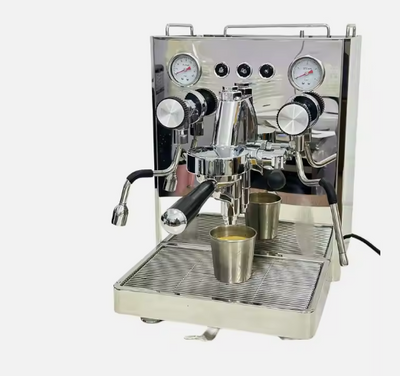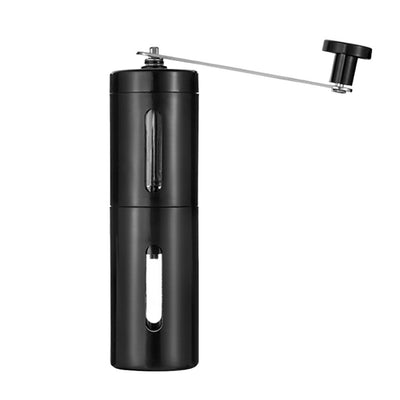Why Panama geisha coffee is so expensive?
If you do a search for the world’s most expensive coffee, you might find Black Ivory coffee, which has been partially digested by elephants in Thailand. Or, maybe you’ll come across the world-renowned Kopi Luwak coffee, whose field-to-cup process also entails a trip through an animal’s digestive tract, this time the Indonesian palm civet, a cat-like cousin of the mongoose found throughout south and southeast Asia.
However, one overlooked, also rarified coffee is Geisha, a scarce and inadvertently ultra-expensive variety harvested in the highlands of Panama. The variety has a history of being ignored, partly due to how challenging it is to cultivate.
From Ethiopia to Panama
While the variety’s name may make some people think of Japan, the Panamanian Geisha coffee bean originated in the Gori Gesha region of Ethiopia. Seedlings were collected circa 1932 and made the rounds to other African coffee-producing regions before it was circulated in the global coffee trade. Eventually, in the 1960s, it made its way to Central America.
“Geisha coffee got to Panama as a way to combat the coffee rust epidemic in the ’70s,” says Manuel Barsallo, co-founder of the Panama City–based Cruce Coffee Company and member of the Panama Coffee Club.
Initially, Geisha was not very well-received by local farmers.
“Almost nobody wanted to grow Geisha because those coffee trees are not very productive,” says Carlos Antonio Jurado, a guide at the 124-year-old Don Pepe Coffee Estate in Boquete, Panama.
By the 1970s, only a few Panamanian coffee farmers had the patience to grow Geisha coffee in the agricultural highlands of the western Chiriquí province, near the Costa Rican border. The low-yield plant requires higher elevation to grow than other coffee varieties. When it does grow, it produces about half the amount of cherries per cluster compared to most other Arabica plants, and has only about half the amount of clusters per branch.
As if that weren’t reason enough for a farmer to turn away from Geisha, the variety takes two to three times longer than the average coffee plant to bear any fruits. “They produce less beans, and it takes up to 10 years to get the first good crop,” says Jurado.
However, with ideal conditions in the western Panamanian highlands—elevation, tropical climate, rich volcanic soil, cool nights, and an extended rainy season—Geisha began to flourish. For the next several decades, it was harvested primarily by family-run coffee farms, including the Jansons, the Lamastus family, and the Vasquez family of the Don Pepe Coffee Estate.
By the early 21st century, Geisha had found its footing in Panama. In 2004, Daniel Peterson, manager of Hacienda La Esmeralda, thought it was formidable enough for international cupping competitions, and so he entered his family’s Geisha in a few—and ultimately came back with a gold medal from the Best of Panama contest.
It was a crucial moment for the variety at home and abroad, Barsallo says. “Since then, baristas started using it for the world championships.”
With Geisha’s newfound fame, the specialty coffee was sought out by the most discerning coffee drinkers and brewers worldwide. This demand, coupled with its complicated growing process and low yields, has made it arguably the most expensive coffee in the world. A cup of Panamanian Geisha coffee can cost the equivalent of $125 in Japan and $200 in Dubai. Now, several countries—including Ethiopia, where the bean originated—have begun importing Panamanian Geisha coffee. Each year, buyers bid higher and higher for Geisha beans at international coffee auctions. In September 2022, the Lamastus family set a new Panamanian Geisha Coffee world record by selling a pound of their Elida Geisha Aguacatillo, honey-processed coffee for a whopping $6,034 to a Taiwanese coffee company.
“Our family felt extremely happy when we were able to overcome that milestone in terms of a price paid for coffee,” says Willford Lamastus, Jr. “But it’s not really based on the money made on that transaction, it is more about what it means.”
For Lamastus, these accolades and expensive price tags demonstrate a changing consumer mindsets toward coffee in general. “In today’s world, people are willing to pay more for wines and other products that are mainly produced in developing nations, [but] when it comes to coffee, the consumer market consistently is talking about, ‘Why should it be expensive? Why is it expensive? It should not be expensive, coffee should be cheap.’
“But now with these milestones, we can help the entire coffee industry. Producers can start sending the message that our product can be perceived differently. It can be perceived as wine is perceived, as high luxury products are perceived,” Lamastus says.
The aficionados who attend those baller auctions are next-level coffee enthusiasts who evaluate coffee like sommeliers, with meticulous attention to aroma, texture, and primary and secondary flavors, before and after some slurp-induced aeration. While there are nuances, many report that the main characteristics of Geisha coffee are extremely floral aromas and flavors—think jasmine and lavender—plus a berry sweetness, a little acidity, and a hint of lemongrass. Some compare its lighter, delicate taste to tea, although that too is subjective.
“The importance of tasting coffee lies in finding out what you really like,” says Barsallo. “More often than not, we find ourselves in coffee shops complaining about how bad the coffee is, but after tasting it we understand what we really like.”
Barsallo’s Cruce Coffee Company works with Panamanian family coffee farms to offer different coffee varieties, including Geisha, at its café and tasting room in Panama City, and packages and distributes it in recyclable aluminum K-cups.
The demand for Geisha coffee varies from country to country,” he says. “The highest demand comes from China, Japan, Taiwan, UAE, Australia, Korea—and [there’s] a growing demand in the US market.”
Panamanian Geisha coffee may remain the most expensive coffee in the world, or it may be replaced by another, rarified variety with an unlikely origin story. But Panama’s growers and brewers are proud to have turned Geisha into a global success—and to have hopefully changed some perceptions of their country and its coffee in the process.







